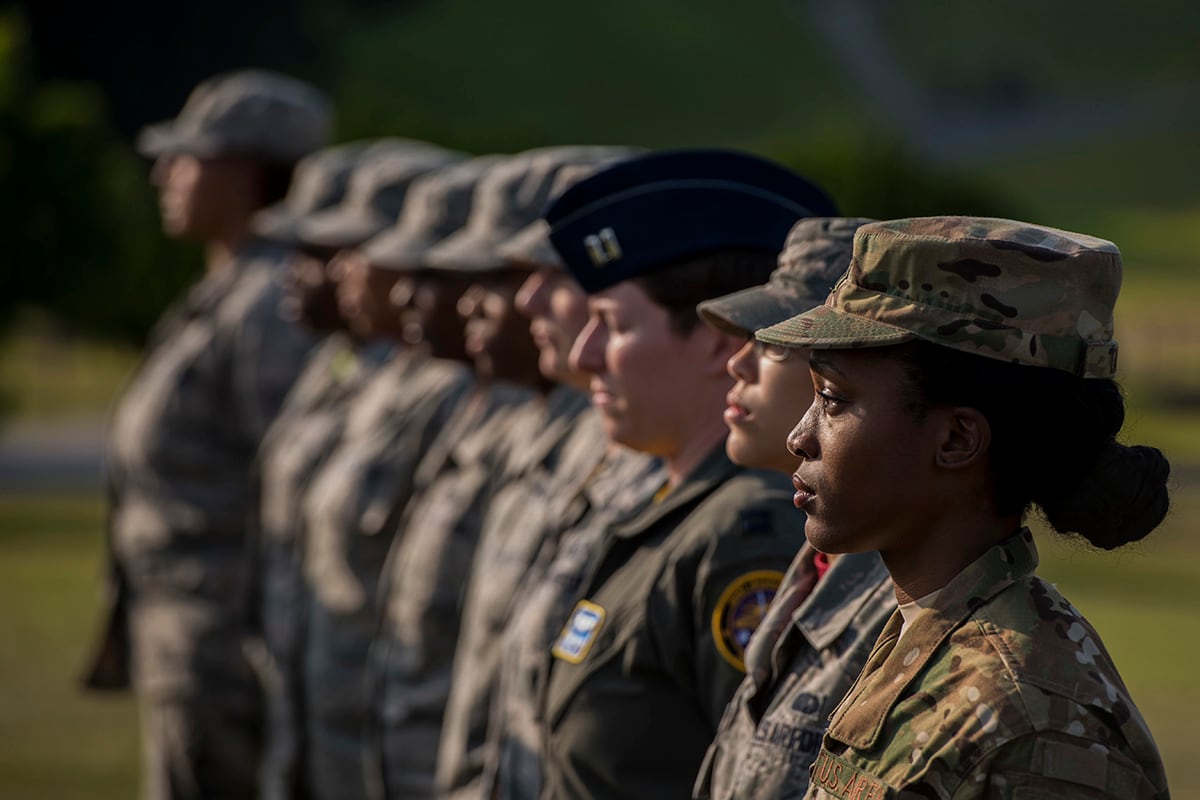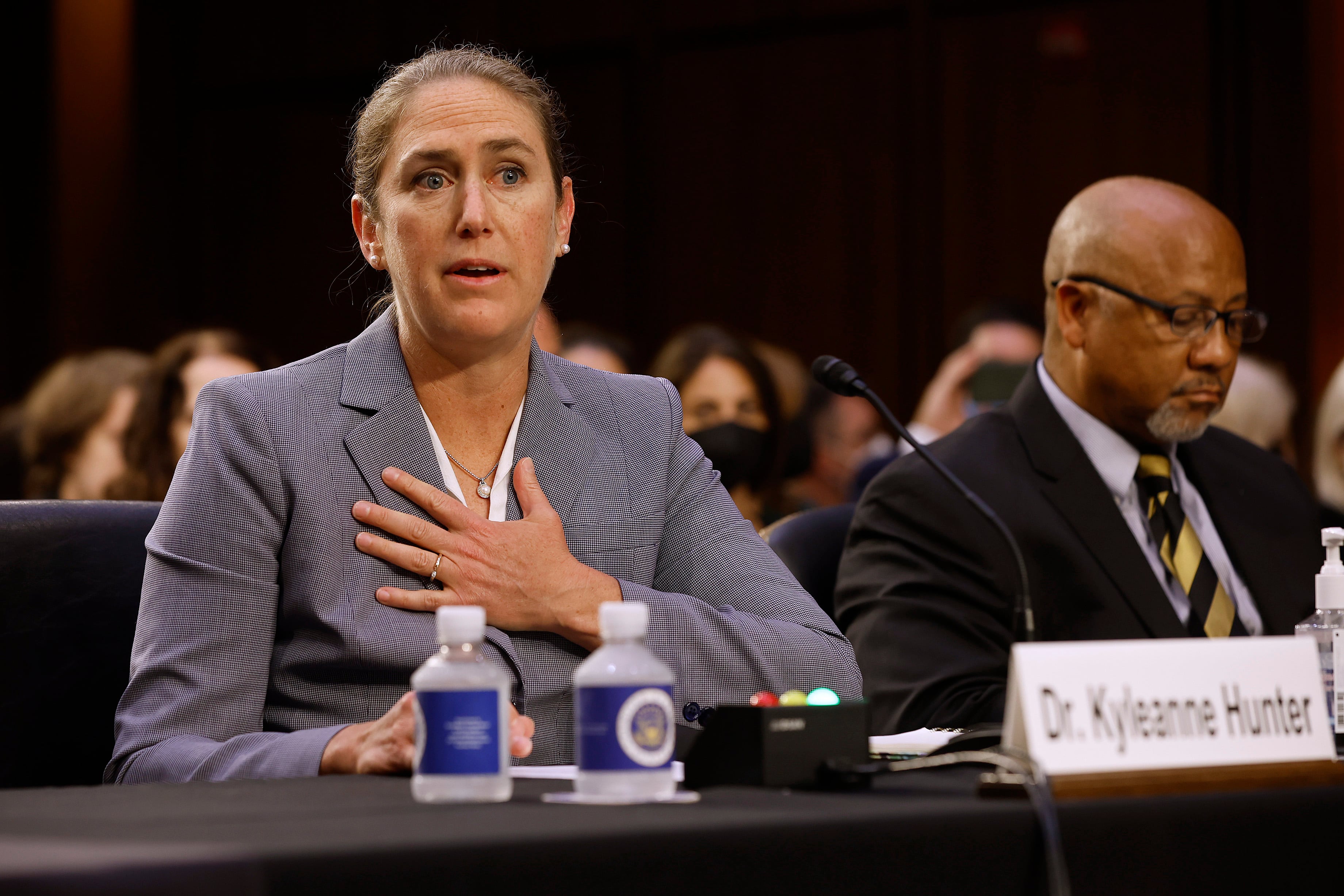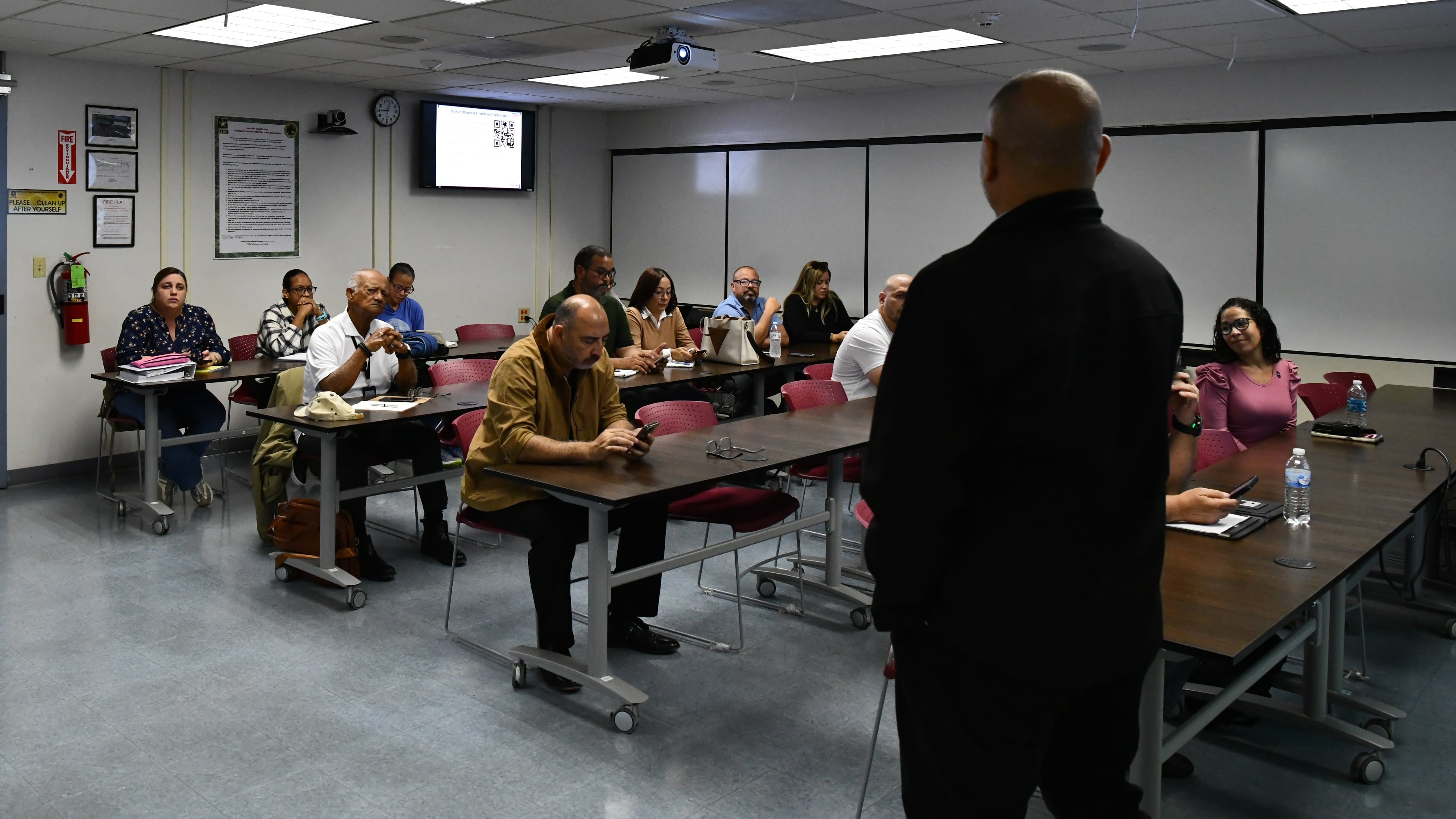Air Force leaders have signed off on a new plan to build a more diverse pilot corps by 2030, looking to level the playing field in a profession that remains dominated by white men.
The strategy aims to grow opportunities for women and minority airmen in some of the Air Force’s premier professions, including manned and unmanned aircraft pilots, air battle managers, and combat systems officers.
“Maintaining our strategic advantage … requires the agility of a diverse workforce to tackle challenges from different perspectives,” Chief of Staff Gen. Charles “CQ” Brown, Chief Master Sergeant of the Air Force JoAnne Bass and acting Air Force Secretary John Roth wrote in the strategy’s foreword.
Their goals fall into three baskets: recruitment, retention, and removing barriers to advancement that minority airmen disproportionately face, according to the strategy paper obtained Wednesday by Air Force Times.
Aircraft have long been a harder sell to minority communities, whether because of a lack of awareness of those opportunities, fewer resources for science and technology programs, or other socioeconomic factors that can hinder the pursuit of flight, than to white prospects. Now, the Air Force is pledging to beef up Junior Reserve Officer Training Corps and Civil Air Patrol programs, and target underrepresented groups in social media and marketing campaigns.
RELATED
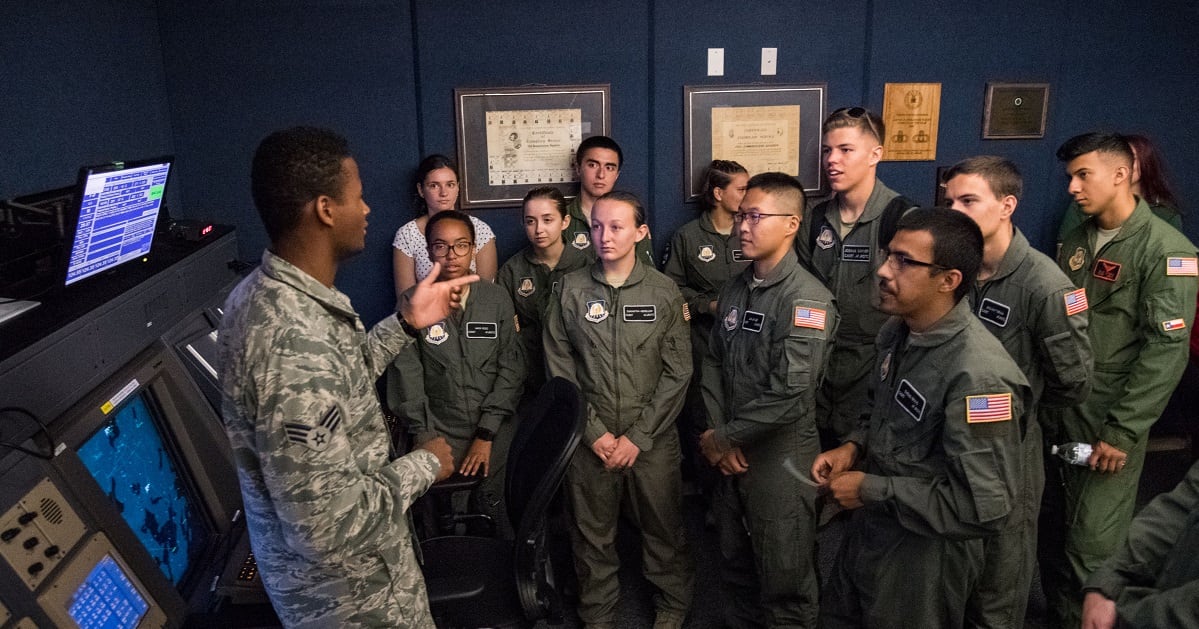
The service hopes to increase the number of events with underrepresented youth by 300 percent by fiscal 2025, to total 300 engagements a year. JROTC slots aim to grow from 120 in 2018 to 500 by 2023, with a particular emphasis on bringing in participants with no prior involvement with the Air Force.
Setting recruitment targets is not about meeting a quota, which is banned by federal law, but instead about mining new places for untapped talent, the Air Force says. That includes colleges and science and technology programs with largely minority members.
The goal is for a senior Air Force leader to visit each of the approximately 775 minority-serving institutions, like historically Black colleges and universities and Hispanic-serving institutions, by 2025.
Once a new crop of people join the Air Force, the challenge is convincing them to stay.
As USAF aims to better reflect the demographics of the U.S. population that is eligible and qualified for military service, it plans to create a mentorship program focused on minority and female applicants to rated aircrew positions. That would prompt a new look at ROTC, Officer Training School, and the U.S. Air Force Academy to ensure minorities are prepared for rated careers.
RELATED
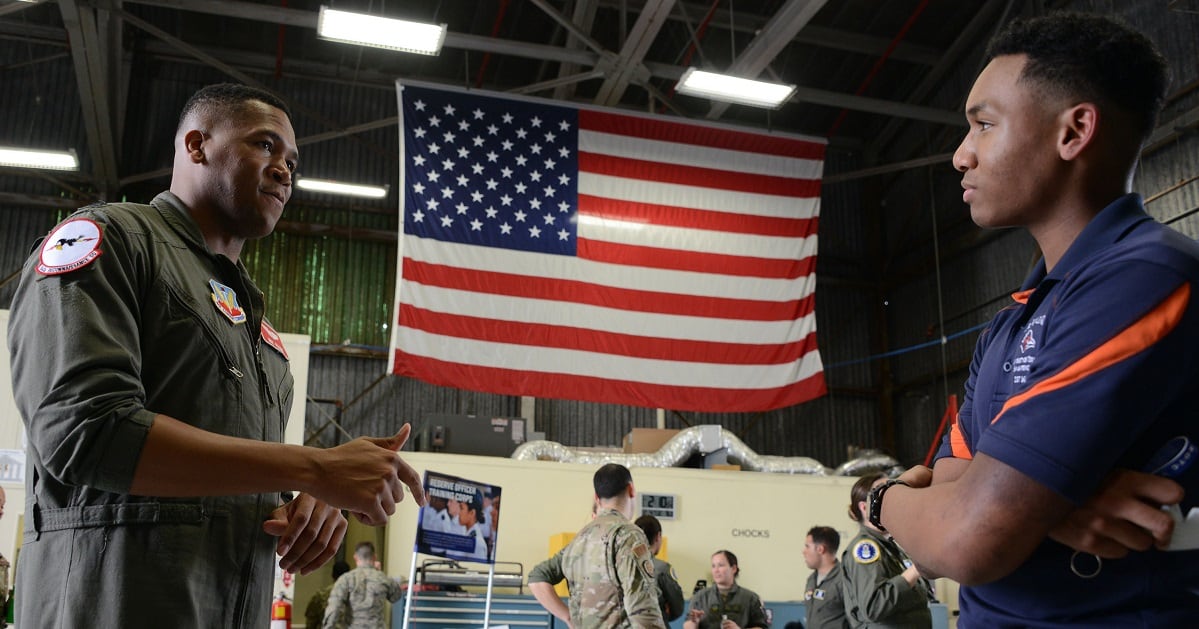
In fiscal 2020, men comprised nearly 94 percent of active-duty pilots, and women just over 6 percent, according to Air Force Personnel Center data from October 2020. Those numbers have remained almost stagnant — up from 5 percent women in 2016 to 6.4 percent in 2020 — in the past five years.
The active-duty Air Force had 12,395 pilots, 3,313 navigators and 1,343 air battle managers at the lieutenant colonel level and below as of Oct. 31, 2020, according to AFPC. Of those, women accounted for 838 pilots, 375 navigators, and 252 air battle managers.
USAF is also struggling to move the needle on racial and ethnic diversity in the pilot corps. In 2020, almost 88 percent of active-duty pilots were white, compared to about 12 percent minority airmen. Nonwhite airmen and those who declined to list their race or ethnicity made up about 10 percent of the active-duty pilot force as of 2016, the service said.
As of last October, 71 percent of active-duty airmen were white, 15.6 percent were Hispanic or Latino, 15 percent were Black, 4.3 percent were Asian, 1.2 percent were Native Hawaiian or Pacific Islanders, and less than 1 percent were American Indians or Native Alaskans, the Personnel Center said. Nearly 5 percent identified as more than one race.
“When I was a captain, I did an interview for Air Force Times, and it talked about the percentage of African Americans that were pilots. It was 2 percent. That was 30 years ago,” Brown said in December, according to Air Force Magazine. “You know what it is right now? It’s still 2 percent.”
Brown has logged more than 2,900 flying hours, including 130 combat hours, in the F-16 Fighting Falcon fighter jet and 15 other fixed- and rotary-wing aircraft.
More white active-duty pilots choose to stay in the service longer as well, according to an Air Force chart from June 2020. That data shows the percentage of minority pilots who decide to continue their service begins to fall below white pilots around the five-year mark. The gap is widest around 19 years of service, when around half of white pilots stay in the service compared to about 40 percent of minority pilots.
The disparity between male and female active-duty pilots is starker, with female retention falling to 80 percent around 10 years of service compared to 90 percent of men. That widens to about 60 percent of men who stay in the Air Force around the 13-year mark, compared to about 40 percent of women.
Women often face more pressure to juggle work and family or to give up one altogether, as well as other cultural and structural barriers that lead them to leave the military. The Air Force has multiple teams looking at minority and women’s issues to build a service that works better for everyone, from less stringent hair regulations for women to reconsidering how cockpits could fit people of more shapes and sizes.
Air Force job assignments can also be more flexible so women and minority rated officers can continue serving and growing professionally as their needs change, the strategy said. And, there’s more to do to bolster coaching and mentorship to help airmen learn from their superiors—whether they share their life experiences or not.
By 2030, the Air Force wants to shrink the long-term retention gap to less than a 2 percent difference between men and women, and white and minority airmen. That can have a ripple effect on service leadership over time, as many of the three- and four-star generals in the top echelon came from pilot backgrounds.
To keep a handle on its progress, the Air Force is creating a database to track the demographics of airmen in rated career fields from the time they join the service to their retirement. It also plans to issue quarterly reports on those demographics and further recommendations.
A group led by Air Education and Training Command will update Air Force headquarters on the initiative’s progress each quarter.
The service seeks $18 million a year through fiscal 2025 for its “Rated Diversity Improvement” initiatives, up from $5.5 million in 2019.
“This strategy establishes a flight plan for attracting, accessing, and retaining diverse and talented airmen to strengthen the incredible rated aviation corps that exists today,” the strategy paper said. “The future force, comprised of a rated corps both technically proficient and lethal in their craft, will be ready to fly, fight, and win.”
Rachel Cohen is the editor of Air Force Times. She joined the publication as its senior reporter in March 2021. Her work has appeared in the Washington Post, the Frederick News-Post (Md.), Air and Space Forces Magazine, Inside Defense, Inside Health Policy and elsewhere.
